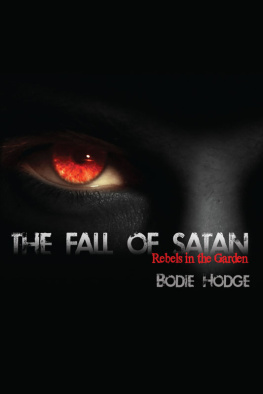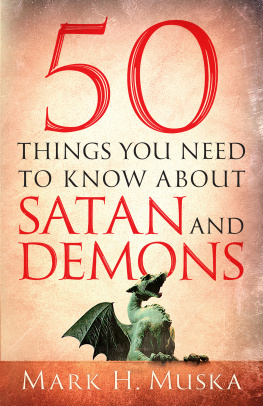All rights reserved.
Casper Stith is NOT responsible for any psychotic breakdowns or mental illnesses which result from reading this book. Casper Stith assumes NO liability for the information provided herein. This information has been shown to SHOCK the central nervous system, so PROCEED WITH CAUTION and AT YOUR OWN RISK . All images are either public domain, or company logos used under th e nominative fair us e provision.
Imagine
Yo u re stuck in traffic. Anxious and stressed, you glance at your watch, realizing that you have no chance of making your nine-o-clock meeting.
In an attempt to take your mind off of the stress, you take a deep breath and gaze out the window, noticing the emblem on the car in front of you.
Glancing down at the steering wheel, you notice that the logo on your steering wheel is similar to the emblem on the car in front of you. Yo u ve seen that same emblem thousands of times, but never really thought about what it meant or signified.
You chalk it up to coincidence.
You continue to wait, suddenly realizing that you forgot to buy your wife an anniversary gift. You quickly think about something else to avoid succumbing to the stress.
You take a deep breath and check your watch again , Damnit! This sucks !
Traffic has n t budged in fifteen minutes. You are tempted to just get out of your car and grab a bite to eat from the fast food restaurant on the other side of the street.
Realizing that that is not a feasible option, you sigh and lean your head back against the headrest. You notice that the sign for the fast food restaurant resembles the one on your steering wheel and on the car in front of you.
Becoming suspicious that this is not merely a coincidence, you look around and notice that a nearby bank is also using the same symbol for their logo.
With your intellect now stoked, you pull out your smartphone to do a little investigative research on why these symbols are so similar. As you go to tap the internet button, you notice that the icon also uses the SAME SYMBOL!
Taking a moment to reflect, you realize that many other large companies use the same logo.
Just as your mind starts becoming extremely curious about the recent coincidences, you are brought back to reality by the honking horn of the car behind you. The stress of the horn jolts you back to your worries; the traffic starts moving and you bear down on the gas pedal to keep up with the flow.
I bet if I do n t hit any other traffic lights I can make it on time to the meeting .
You switch lanes and accelerate towards your destination, never to think about the strange coincidences agai n
--------------------------------------
Very few people notice, let alone care, about the symbols and signs surrounding them throughout their lives. Is it possible that these symbols have a deeper meaning?
Taking the idea a step further, is it possible that many of the most prevalent symbols represent Satan?
As far-fetched as that sounds, the answer is a resounding yes. The symbols of Satan surround us constantly, and we do n t even know it!
In this book we separate fact from fiction and dig into one of the most prevalent yet least understood enigmas in the history of mankin d Satan .
Le t s Get Medieval

( The portrait above is of Nicolas Copernicus. Notice th e eye of providenc e a.k.a . the all-seeing ey e - in his left hand.)
Throughout history, dogmatic belief systems are often changed by revolutionary ideas.
Until the sixteenth and early seventeenth centuries, science and religion postulated that the earth was the center of the universe.
Nicolas Copernicus, the respected astronomer and mathematician, postulated that the earth was NOT the center of the universe, a revolutionary idea indeed.
Despite the audacity of Copernicu s claim, the idea was surprisingly met with little opposition , and the concept of heliocentrism was gradually accepted as fact.
Is it possible that there are assumptions throughout the scientific, religious, and educational communities which are incorrect? Could some of the most basic fundamental principles be based off of faulty premises?
The prevailing astronomical narrative is that the eart h s place in the cosmos is fixed. It is believed that the solar system has always worked like one big clock and will continue in that manner ad infinitum.
Those who question this dogma are met with fierce resistance.
Immanuel Velikovsky learned that lesson the hard way.
Velikovsky, a colleague of Albert Einstein as well as a decorated psychologist, dared to question the historical narrative .
His most popular work, Worlds in Collision , examines the apparent catastrophic history of planet earth , and posits that the solar system has a much more storied and violent history than commonly understood.
Upon its release in 1950, Worlds in Collisio n was an immediate New York Times Bestseller. Despite its overwhelming popularity with the public, Macmillan Publishing was forced to drop the book within two months of publication due to the outrage it received from the scientific community .
The academic establishment was not approving of the multi-disciplined approach of Velikovsky. Being a psychologist, Velikovsky could not possibly be an expert in an unrelated field, they claimed.
The information was no t to be looked at holistically; anything related to the stars and planets should only be researched by astronomers, and so o n a piecemeal approach to understanding the big picture.
Velikovsky examined all of the available information and made some very bold assertions.
Much of the hard evidence remaining from ancient history is dismissed as metaphor; as having no basis in reality but instead attributed to hallucinations of our barbaric ancestors.
SHOULD WE BE IGNORING SO MUCH OF OUR DOCUMENTED HISTORY?
Science tells us what we can know, but what we can know is little , and if we forget how much we cannot know we become insensitive to many things of very great importance . Bertrand Russell
Myths and legends also point to a more complex tale of human history on earth; a history which saw a period of perpetual darkness,followed by a Golden Age .
Mythical civilizations such as Atlantis and Lemuria are thought to have occurred during th e Golden Age .
Ushering in the end of th e Golden Ag e was a mythical cataclysmic doomsday scenario, which would shape the history of planet earth for thousands of years, up through the present.
According to Velikovsky and others, this alternate view of world history is being n a vely overlooked by just about everyone.
Cave art, rock carvings, scriptures, and mythologies weave a coherent picture of our true past we just choose to ignore it .
We often assume that those who painted in caves and left clues to our past were primitive, but its important to note that they were human beings those with the same physiological make-up as you and I.
If you lived in the ancient past, would you be more apt to document crazy dreams and hallucinations, or instead would you be more apt to document things pertaining to your reality ?
If there were monumental and catastrophic events occurring in the skies above and on earth itself, would you document that? Other than carving what you are seeing into rocks, how else could you ensure that this information stood the test of time?
Shouldnt we at least give these people from our past the benefit of the doubt?












